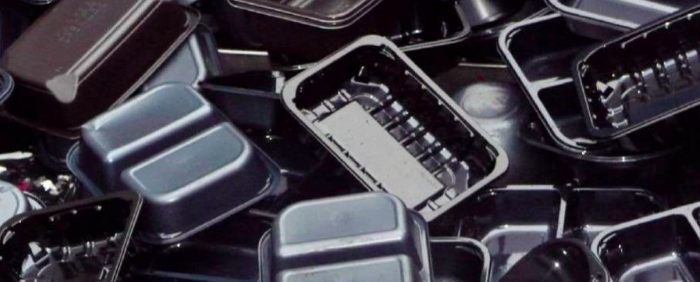
Used extensively in the electronics industry, black plastic containing toxic substances is mixed with other plastics during recycling, used for food-consuming goods or toys.
The plastic is everywhere. Every year, humans produce about 400 million tonnes . But not all plastics are equivalent. Depending on their use, is sometimes added their additives to color, make them resistant to heat , more solid and more flexible, etc. Some chemical residues even come from the polymerization process itself.
Among all these plastics, that of black color poses a major problem, puts forward a study published in the journal Environment International . Because this plastic comes mainly from electronic products, which contain many chemical additives: antimony , cadmium , chromium , mercury , lead , or flame retardants. However, this plastic is mixed with all others during the recycling process and is found in a multitude of objects, some potentially in contact with the mouth such as food packaging, cooking utensils or toys.
Half of the black plastic objects contaminated
15% of plastic arriving at recycling centers is black plastic, according to Andrew Turner, who conducted the study. In addition to its aesthetic qualities, black plastic is easier to manufacture from recycled materials, since different colors can be mixed, unlike transparent bottles, for example, which can not be made from red, green or opaque bottles.
After analyzing more than 600 plastic samples of different black objects (hair clips, ear, screwdriver, felt caps, mugs thermos , key USB , boxes CD , cocktail picks …), researchers detected a presence more or less toxic substances in these objects. Half contains bromine , one quarter lead and antimony and 7% cadmium. If the concentrations do not pose a real danger for electronic products, it is not the same for those intended for food contact.
The vicious circle of contamination
But why are we using this black plastic from electronic waste rather than recycling the other sources (food packaging, CD cases …)? Just because it is thrown in the trash. Most sorting centers use infrared spectrometry, unable to detect carbon black, the pigment used to color black plastic. Black packaging is systematically discarded and manufacturers are forced to fall back on old black plastic already recycled.
A vicious circle, since these have already been made themselves from electronic waste. It contains up to 15 different polymers, resulting from successive recycling. “There is a kind of circular economy of pollution,” says Turner. Two samples of black plastic containing high levels of bromine are enough to contaminate 32 other products that did not contain any at all!
Holes in the regulations
Several European directives have, however, imposed restrictions on toxic substances in electronic products. A specific recycling sector was set up in 2006 for waste electrical and electronic equipment ( WEEE ). Directive 2011/65 / EU of 8 June 2011 (RoHS Directive II) reinforces the requirements of the regulation on the limitation of dangerous substances.
Contacted, the organization Eco-systems responsible for the recycling of WEEE in France has confirmed to separate plastic from these devices other plastic waste. Nevertheless, for imported products, “we can not guarantee that they do not contain recycled brominated plastic because we only control recycling processes in our territory”. In other words, it is perfectly possible that contaminated black plastic can be found in our food trays via recycling as shown in the study by Andrew Turner. And all the more so as faults exist in the legislation: the import of electronic waste from Asia, in principle forbidden, is bypassed by qualifying the waste as “repairable products” or “second-hand products”.
Faced with this, several companies have already taken the lead. In England, distributors Iceland and Waitrose have announced the removal of black plastic from all their food packaging. The association Waste and Resources Action Program (WRAP) calls it, for the use of black pigments detectable infrared order to recycle the black plastic.
- Black plastic objects are made from plastic made from electronic waste.
- They contain many traces of potentially toxic substances, including those intended for food contact.
- Black plastic is not recycled and therefore comes from other potentially contaminated recycled products.